In The News: Building Momentum for Daintree Conservation
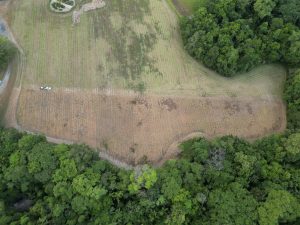
Aerial view of the newly planted rainforest section of Mossman Botanic Gardens, a project in Daintree conservation. Image: Hayden White.
Even though the World Heritage-listed Daintree Rainforest, the oldest continually evolving and surviving rainforest contains rare and threatened plants and animals found nowhere else on the planet, it is still under-protected. At Rainforest Rescue, we have made it our mission to protect and restore this biodiverse wildlife haven, and coming into our twenty-fifth year of operation, the momentum is truly building. In the United Nations Decade on Ecosystem Restoration, it is an exciting time to be part of the green movement, sharing, collaborating, and inspiring change in Queensland’s stunning Far North. We have been busy with all sorts of things, including construction, protection, monitoring, maintenance, data collection and analysis, and planting as many rainforest seedlings as possible!
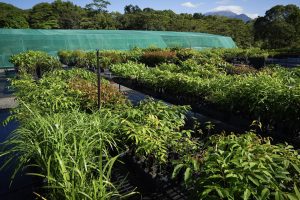
Rainforest Rescue’s New Native Nursery is filling up with rainforest seedlings. Image: Martin Stringer.
Nurturing Nature with our Native Nursery
One of our most ambitious goals yet was to build and operate the largest native rainforest plant nursery in the region. After construction was almost completed in late 2023, our Nursery Team successfully transitioned from our old nursery site in Diwan to the new site in Cow Bay. The team is several months into the cycle of native seed collection, germination, and growth of rainforest plants. This new nursery will be an important part of restoration projects within the Daintree region. As the green economy gathers pace, a place for the propagation and production of rainforest flora is a symbol of intent and capacity building for the future. In a few years, this nursery will be capable of producing one hundred and fifty thousand plants annually to produce one million seedlings within a decade of operation! Meanwhile, our previous nursery in Diwan had a change of hands to Jabalbina Yalanji Aboriginal Corporation, along with horticultural training provided by our nursery manager, Marine Deliens, so they can use this space to grow rainforest plants for their own restoration projects. Jabalbina Yalanji Aboriginal Corporation’s General Manager, Josh Paterson, was enthusiastic about the opportunity: “Having on-ground partnerships, especially in the restoration of country, is really important to us. The generosity of Rainforest Rescue through their training and gifting of the native nursery means we can facilitate the ongoing vision of developing Yalanji Bama (our people) as caring custodians of the Bubu (land) as they return to live and work on country.” Despite Tropical Cyclone Jasper in December 2023 packing a punch with winds and rain, and then even more record-breaking rain, our new nursery weathered the storm just fine. It was built to last and in a well-drained area. Miraculous!
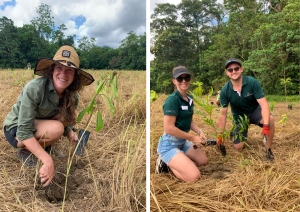
Nursery Manager Marine Deliens and volunteers planting trees at Mossman Botanic Gardens
Restoration Sensation
In November last year, Rainforest Rescue and Terrain NRM supported the Mossman Botanic Garden project with an epic community tree planting, setting the stage for a twenty-first-century botanic garden focused on nature positive, tropical rainforest conservation. After a week of ground prep and eight months of careful seed collection, propagation and nurturing of ready to-plant seedlings, Rainforest Rescue proudly supplied the four thousand trees now thriving across a hectare of the Mossman Botanic Garden site. The Rainforest Rescue Land Management Team will provide maintenance over the next two years to ensure the success of this biodiverse patch of young rainforest, which is playing a significant role in public education and visibility on the growing need for restoration. It is hard to think of a better way to reach a new level of restoration scale than with a community project that will become a world-class ‘gateway to the Daintree’.
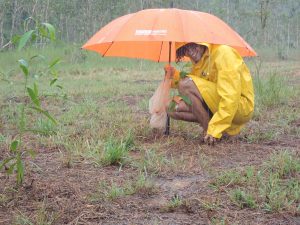
Conservation Field Labourer Nico Walker planting at the old Daintree Airstrip. Image: Barbara Maslen
In the last few weeks, we have started to plant out our new restoration site – ten hectares of cleared land, making up what used to be the Daintree Air Strip. The land management team has been powering through the very persistent wet season weather, getting soaked to the bone and yet full of smiles. This site will also allow us to experiment with our restoration methodologies and improve our data collection to ensure we are working and using our funds to the best possible efficiency.
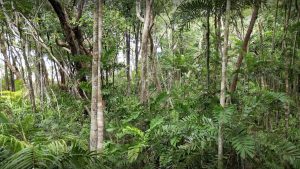
Rainforest Rescue’s latest protected property, Lot 1 Cape Tribulation Rd
Rainforest to Reef
Our latest rescue of underprotected rainforest late last year was Lot 1 Cape Tribulation Road – almost four stunning hectares of both critically endangered Littoral Rainforest and endangered Wet Tropics Lowland Rainforest. This property is a prime example of the importance of the relationship between rainforest and reef. These two World Heritage areas are interconnected, relying on each other for survival. Managing Director of The Great Barrier Reef Legacy, Dean Miller, says, “Rainforests act as the kidneys of the land, holding fast the soil and ensuring water draining off these magnificent places is clear and nutrient-poor, so corals don’t suffocate”.
This purchase is one of only two property rescues this far north in the Daintree region, moving us closer to our long-term goal – creating connected corridors that encourage wildlife and plant species to thrive on land while protecting our reef.
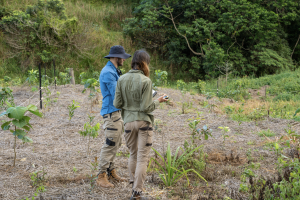
Fred Holden from James Cook University assesses soil at restoration site Tranquility for a long-term monitoring project
Digging Deeper: Soil and Carbon
Keeping a close eye on our trees, we have also been digging into another world beneath. Improving the health of our soil is vital, not only for biodiversity but for climate action. Last year, we were lucky enough to engage soil scientist Fred Holden from James Cook University (JCU) to develop a soil monitoring program at our restoration site, NightWings, a former sugar cane farm. From this, we hope to answer the question: ‘How do degraded soils recover after the trees come back?’ In this spirit of scientific collaboration, we have partnered with Dr Alex Cheesman of JCU to develop a methodology for estimating carbon sequestration in our planted trees and carbon storage in our protected forests. These are valuable metrics to pass on to business partners and foundations who support our work in these two areas. It is also a step in the right direction towards a green economy, where humans and nature are no longer in competition but can thrive alongside each other.
Funds provided by the Australian Wildlife Society assisted Rainforest Rescue in planting five hundred trees to restore damaged rainforests and rebuild the habitat of countless Daintree flora and fauna.
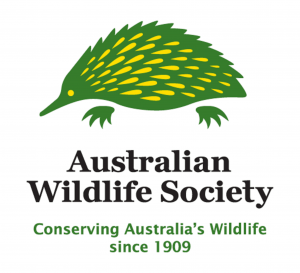
[As seen in Australian Wildlife Society Magazine Autumn Volume 2/2024]
Want more good Rainforest news in your life?
Subscribe to our eNews | Follow us on Instagram | Like us on Facebook | Subscribe to our YouTube channel
Help Protect Rainforests Forever
Donate to Protect Rainforests Forever | Become a Rainforest Guardian | Partnership Options

